Filter by
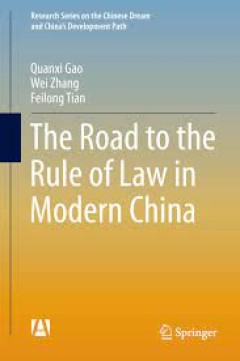
The Road to the Rule of Law in Modern China
This book is a grand review of the centurial development of rule of law in China. It covers the most important issues in this area and presents “political constitution,” a new interpretative framework that allows the Chinese experience of rule of law to be more fully and correctly expressed. It is especially useful to scholars involved in the study of modern China. The main chapters of this…
- Edition
- -
- ISBN/ISSN
- 978-3-662-45637-8
- Collation
- -
- Series Title
- -
- Call Number
- -

The Road to Universal Logic Festschrift for the 50th Birthday of Jean-Yves B…
This second volume of a collection of papers offers new perspectives and challenges in the study of logic. It is presented in honor of the fiftieth birthday of Jean-Yves Béziau. The papers touch upon a wide range of topics including paraconsistent logic, quantum logic, geometry of oppositions, categorical logic, computational logic, fundamental logic notions (identity, rule, quantification) an…
- Edition
- -
- ISBN/ISSN
- 978-3-319-15368-1
- Collation
- -
- Series Title
- -
- Call Number
- -

The Road to Universal Logic Festschrift for 50th Birthday of Jean-Yves Bézi…
This is the first volume of a collection of papers in honor of the fiftieth birthday of Jean-Yves Béziau. These 25 papers have been written by internationally distinguished logicians, mathematicians, computer scientists, linguists and philosophers, including Arnon Avron, John Corcoran, Wilfrid Hodges, Laurence Horn, Lloyd Humbertsone, Dale Jacquette, David Makinson, Stephen Read, and Jan Wole�…
- Edition
- -
- ISBN/ISSN
- 978-3-319-10193-4
- Collation
- -
- Series Title
- -
- Call Number
- -
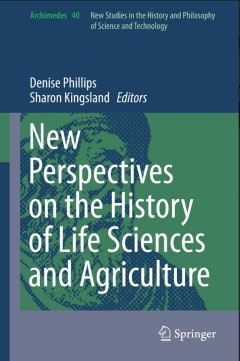
New Perspectives on the History of Life Sciences and Agriculture
This volume explores problems in the history of science at the intersection of life sciences and agriculture, from the mid-eighteenth to the mid-twentieth century. Taking a comparative national perspective, the book examines agricultural practices in a broad sense, including the practices and disciplines devoted to land management, forestry, soil science, and the improvement and management of c…
- Edition
- 1
- ISBN/ISSN
- 1385-0180
- Collation
- VII, 509
- Series Title
- Archimedes
- Call Number
- -
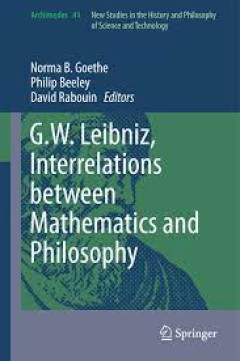
G.W. Leibniz, Interrelations between Mathematics and Philosophy
Up to now there have been scarcely any publications on Leibniz dedicated to investigating the interrelations between philosophy and mathematics in his thought. In part this is due to the previously restricted textual basis of editions such as those produced by Gerhardt. Through recent volumes of the scientific letters and mathematical papers series of the Academy Edition scholars have obtained …
- Edition
- -
- ISBN/ISSN
- 978-94-017-9664-4
- Collation
- -
- Series Title
- -
- Call Number
- -
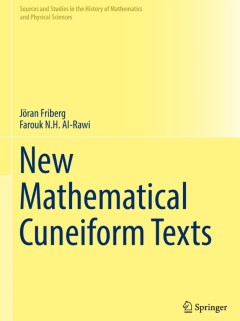
New Mathematical Cuneiform Texts
This monograph presents in great detail a large number of both unpublished and previously published Babylonian mathematical texts in the cuneiform script. It is a continuation of the work A Remarkable Collection of Babylonian Mathematical Texts (Springer 2007) written by Jöran Friberg, the leading expert on Babylonian mathematics. Focussing on the big picture, Friberg explores in this book …
- Edition
- 1
- ISBN/ISSN
- 978-3-319-44596-0
- Collation
- XVII, 553
- Series Title
- -
- Call Number
- -
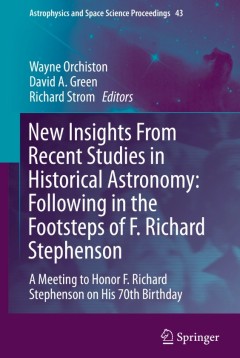
New Insights From Recent Studies in Historical Astronomy: Following in the Fo…
This book contains papers from a conference held to celebrate the 70th birthday of one of the world’s foremost astronomical historians, Professor F. Richard Stephenson, the latest recipient of the American Astronomical Society’s highest award for research in astronomical history, the LeRoy Doggett Prize. Reflecting Professor Stephenson’s extensive research portfolio, this book brings toge…
- Edition
- 1
- ISBN/ISSN
- 978-3-319-07613-3
- Collation
- XXX, 350
- Series Title
- Astrophysics and Space Science Proceedings
- Call Number
- -

The West and Beyond New Perspectives on an Imagined Region
The West and Beyond explores the state of Western Canadian history, showcasing the research interests of a new generation of scholars while charting new directions for the future and stimulating further interrogation of our past. This dynamic collection encourages dialogue among generations of historians of the West, and among practitioners of diverse approaches to the past. It also reflects a …
- Edition
- Alvin Finkel, Sarah Carter, and Peter Fortna
- ISBN/ISSN
- 9781897425800.01
- Collation
- -
- Series Title
- The West Unbound: Social and Cultural Studies
- Call Number
- 461 pages
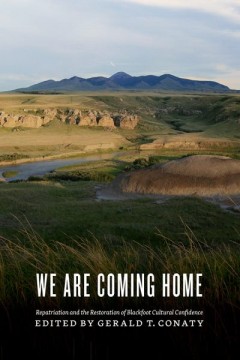
We Are Coming Home Repatriation and the Restoration of Blackfoot Cultural Co…
In 1990, Gerald Conaty was hired as senior curator of ethnology at the Glenbow Museum, with the particular mandate of improving the museum’s relationship with Aboriginal communities. That same year, the Glenbow had taken its first tentative steps toward repatriation by returning sacred objects to First Nations’ peoples. These efforts drew harsh criticism from members of the provincial gover…
- Edition
- Gerald T. Conaty
- ISBN/ISSN
- 9781771990172.01
- Collation
- -
- Series Title
- -
- Call Number
- -
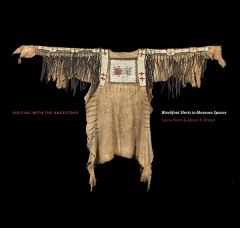
Visiting With the Ancestors Blackfoot Shirts in Museum Spaces
In 2010, five magnificent Blackfoot shirts, now owned by the University of Oxford’s Pitt Rivers Museum, were brought to Alberta to be exhibited at the Glenbow Museum, in Calgary, and the Galt Museum, in Lethbridge. The shirts had not returned to Blackfoot territory since 1841, when officers of the Hudson’s Bay Company acquired them. The shirts were later transported to England, where they h…
- Edition
- -
- ISBN/ISSN
- 9781771990370.01
- Collation
- -
- Series Title
- -
- Call Number
- 10.5 x 10, 232 pages
 Computer Science, Information & General Works
Computer Science, Information & General Works  Philosophy & Psychology
Philosophy & Psychology  Religion
Religion  Social Sciences
Social Sciences  Language
Language  Pure Science
Pure Science  Applied Sciences
Applied Sciences  Art & Recreation
Art & Recreation  Literature
Literature  History & Geography
History & Geography